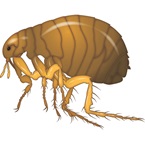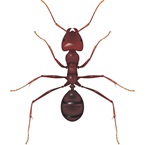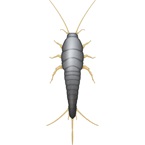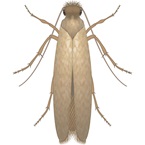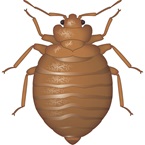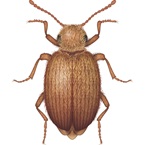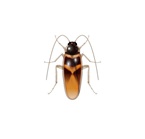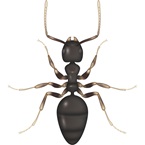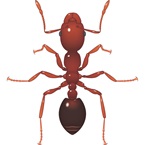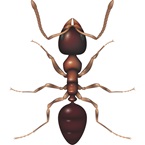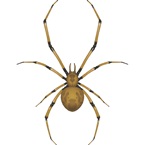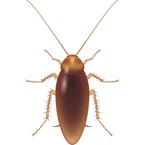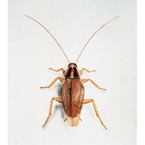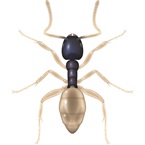Species category: Ant
Scientific name: Monomorium pharaonis
Family: Formicidae
Description
This small ant is yellow-brown in colour with well-developed black eyes. Workers tend to be 1.5-2mm long, while the male is slightly larger at 3mm long and is a darker black colour with wings. The Queen is 3.6-5mm long, she is dark red and winged.
Widely distributed across Australia, they need warm, humid conditions which mean that in temperate lands they are confined to buildings and often found infesting hospitals.
Infestations are discovered in a wide variety of locations including residential blocks, hotels, hospitals, zoos and on board ships. In warmer climates, infestations can even be found outside.
The insects locate themselves in the fabric of buildings (wall voids, windows etc.) or in plants and sterile supplies. They can spread through service ducts (e.g. heating and electrical conduits). The ants forage for water around sinks and areas of condensation.
Ants forage for meat, cheese, fat, sugar, honey, jam etc. In hospital, they will feed on blood and intravenous diet fluids. Dead insects, mice and droppings can also provide a food source.
Behaviour
There are several queens in one nest (polygenic). Winged Pharaoh ants do not fly. The queens are interchangeable, so colonies survive indefinitely. Disturb, rather than destroy the nest, and there is a strong likelihood that you will encourage a new colony.
These social insects live in colonies from a few dozen to 300,000 ants. The ants can survive low temperatures for prolonged periods where the workers continue to forage for food.
Risks
Materials are often damaged by the ant’s constant chewing with their strong mandibles. They can even penetrate the plastic bags containing sterile dressings and instruments.
Pharaoh ants pose a risk to health as pathogenic organisms can be transmitted when the ants feed in unhygienic places including drains, bins or even wound dressings.

